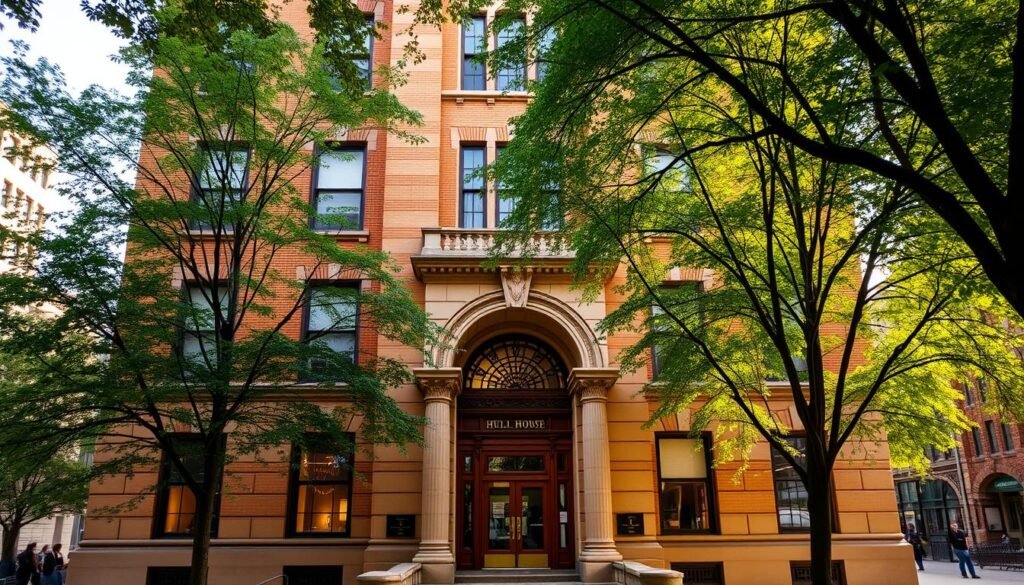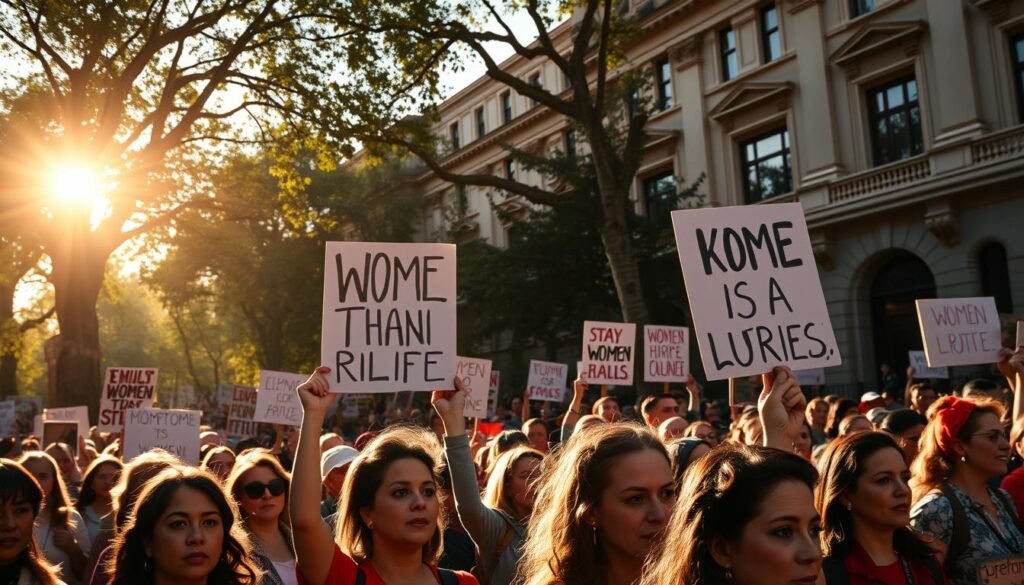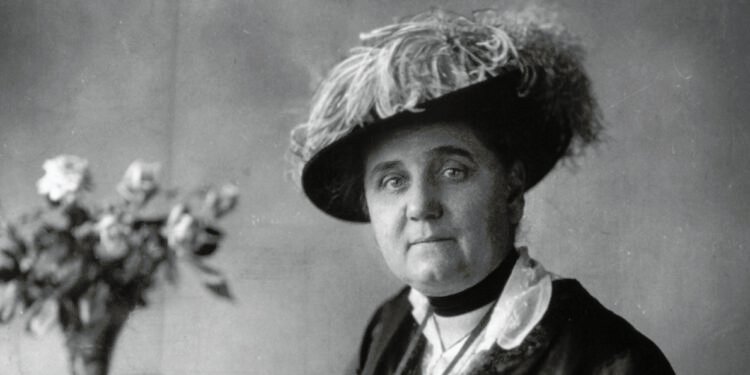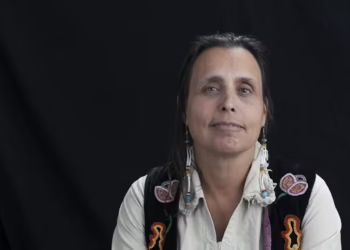One striking fact: the founder of a single Chicago settlement helped shape labor laws, public health, and global peace efforts that still matter today.
Laura Jane Addams rose from rural Illinois schooling at Rockford Female Seminary to study Toynbee Hall’s model in London. She co-founded Hull House in 1889, creating a practical settlement that served immigrant families and inspired a movement in the United States.
As a leading public intellectual and reformer, she pushed for juvenile courts, factory inspection, child labor protections, and women’s suffrage. Her work blended scholarship and hands-on programs, linking local needs to democratic ethics.
During and after World War I she led international peace efforts through the International Congress of women and the Women’s International League for Peace and Freedom. In 1931 she became the first American woman to win the Nobel Peace Prize, cementing her role as a pacifist and public leader.
Key Takeaways
- She founded Hull House, a model settlement that advanced social work and urban reform.
- Her education at Rockford Female Seminary and visit to Toynbee Hall shaped her approach.
- She combined local programs with national policy advocacy on labor and child welfare.
- She led international peace organizing and won the Nobel Peace Prize in 1931.
- The jane addams papers and addams papers preserve her writings and legacy.
Why Jane Addams Still Matters in the United States
Hull House proved that neighborhood-based services can answer big civic challenges. At the settlement, kindergartens, a day nursery, an employment bureau, a gymnasium, and arts classes met everyday needs for primarily immigrant families.
Residents also studied housing, health, and labor conditions and used that research to push for concrete policy. The result shaped juvenile court law, factory inspection, and child labor protections—practical reform that changed lives.
The settlement house model informed modern social work and nonprofit practices. Research-driven programs and local partnerships remain a proven way to scale impact across cities in the United States.
Leadership at Hull House emphasized coalition-building among women, neighbors, and civic allies. Collaborations with colleagues like ellen gates Starr show how shared leadership and mentorship create lasting networks of change.
Studying jane addams offers an evidence-based template: combine services, civic education, and policy advocacy to support children, train workers, and stabilize neighborhoods over the long term.
Early Life in Cedarville: Family, Father, and Foundations
Born in Cedarville, Illinois, she grew up where farm routines met civic conversation. The household offered material stability and a steady stream of public duty thanks to her father’s local influence.
John H. Addams, republican reformer and mentor
John H. Addams was a prosperous businessman and banker who helped found the Illinois Republican party. He served as state senator and supported Abraham Lincoln, modeling ethical stewardship and public responsibility for his daughter.
Childhood challenges and a sense of social mission
She was the youngest of eight surviving children. Her mother died when she was two, and losses among siblings sharpened an early awareness of vulnerability in families and children.
A bout with Pott’s disease left a spinal curvature and lifelong health limits. These challenges deepened empathy and a practical sensitivity to accessibility and public health.
Voracious reading—especially Dickens—fed a moral imagination and an initial desire to study medicine and serve the poor. Sunday school and liberal Christian values reinforced a democratic ethic that linked private privilege to public duty.
That father–daughter bond gave confidence and accountability she later recalled in Twenty Years at Hull-House. These formative years set the stage for higher education and a life of reform.
Education at Rockford Female Seminary and the Making of a Reformer
At Rockford she learned to lead debates, edit publications, and turn study into civic action. The institution functioned as a crucible for leadership, where academic rigor met public purpose.
Rockford Female Seminary awarded a diploma in 1881 and became Rockford College in 1882. She was valedictorian, edited the college paper, and led her class — early signs of an organizing skill set that later shaped Hull House.
Originally she planned to study medicine, but health setbacks and her father’s death changed that course. Those limits redirected ambition toward broader social work and institutional leadership.
Reading Carlyle, Ruskin, and Tolstoy expanded her moral imagination. Early speeches at the seminary argued that educated women should claim public roles and independent thought.
The debate culture and editorial experience honed communication skills she used as a public intellectual and reformer. This period merged practical learning with democratic ethics.
Her Rockford education seeded methods later used at Hull House and prepared her for the London trip that clarified the settlement idea.
European Influence: From Toynbee Hall to a Vision for a Settlement House
A short visit to Toynbee Hall convinced her that daily, shared life could bridge class divides. In Whitechapel, university-trained residents lived in working-class neighborhoods to teach, learn, and share culture.
Toynbee Hall rejected distant charity. Residents ate meals, ran classes, and joined local clubs. That reciprocal style shaped a philosophy of mutual learning rather than “professional doing good.”
Ellen Gates Starr and the London model
Ellen Gates Starr joined the visit and embraced the idea of a settlement. Starr brought arts and organizing skills that complemented intellectual and civic aims.
Translating ideas from Whitechapel to Chicago
Back in Chicago, they adapted the Whitechapel model to an immigrant-rich West Side. The plan emphasized education, employment services, public health, and arts as civic tools.
Hull House would later put these principles into practice: daily contact, sincere engagement, and programs that respected neighbors as partners in reform.
Founding Hull House in Chicago: A Settlement House Takes Root
In September 1889 a modest mansion on Chicago’s West Side became a bustling center for neighborhood learning and relief.

The Charles Hull residence was the site where jane addams and ellen gates starr opened a pioneering settlement. The September 1889 launch turned a private house into a public project.
Building a community hub
The new hull house offered a night school, employment bureau, public baths, a gym, and a community kitchen. Programs soon added a music school, theater, library, and the Butler Art Gallery.
Visitors included immigrants seeking work and neighbors joining clubs. Weekly attendance reached roughly 2,000 people as the complex grew to thirteen buildings and a playground.
Women residents and supporters
Educated women lived on site to learn from daily life and co-create services. Residents and allies such as Florence Kelley, Julia Lathrop, Grace and Edith Abbott, and Alice Hamilton became national reform leaders.
Funding blended private gifts and local support; donors like Helen Culver and Louise DeKoven Bowen helped sustain rapid growth. Hull house functioned as a living laboratory for social work and policy experiments rooted in neighborhood reality.
Programs for Children, Immigrants, and Workers at Hull House
Practical programs at the house linked child welfare, job training, and public health under one roof. Hull House established a kindergarten and a day nursery that let mothers work while their children received care and early education.
Adult classes taught English and civic skills to help immigrants find better work and join community life. An employment bureau matched applicants to employers, offered resume help, and ran job-readiness training.
The settlement treated health as a civic issue. Public baths, clinics, and hygiene programs fought disease in crowded industrial blocks and improved neighborhood well-being.
Play and recreation—clubs, a gymnasium, and playgrounds—kept children safe and promoted healthy growth. Arts education through the Butler Art Gallery and local school partnerships built pride and creativity.
Programs fed research and policy work. Staff measured outcomes, adjusted services, and trained future social workers, making Hull House a model for integrated education, labor support, and community health.
Research and Reform: From Mapping to Municipal Change
Field investigations at Hull House transformed daily encounters into data that policymakers respected. Residents turned observations into surveys and maps that tied local problems to city systems. This method made overcrowding, disease, and unsafe work visible.
Investigations into housing, health, and labor conditions
Teams studied housing density, midwifery, fatigue, tuberculosis, typhoid, garbage collection, cocaine, and truancy. They used statistical mapping to show where problems clustered.
Maps and short reports helped officials see patterns. That clarity pushed targeted municipal action on sanitation and inspections.
Juvenile court law, factory inspection, and child labor protections
Data from the settlement led advocates to secure the first juvenile court law. They also won factory inspections and tenement regulations.
Eight-hour day for women and safeguards for working girls
Campaigns promoted child labor protections and an eight-hour day for women to protect health and wellbeing. Collaborations with labor groups, physicians, and teachers helped turn findings into ordinances and state statutes.
Over the years Jane Addams and colleagues made Hull House both a service hub and a policy engine. Their work shaped modern social work and set a standard for evidence-driven civic reform.
Jane Addams and the Progressive Era Networks
Civic networks formed around the settlement multiplied influence, sending trained leaders into government and national organizations. These linkages turned local evidence into policy and built a steady talent pipeline.
National leadership and standards: In 1910 jane addams served as the first woman president of the National Conference of Social Work. She also worked with the National Consumers League to raise workplace standards and public protections.
Allies who amplified change
Hull house residents Grace and Edith Abbott, Florence Kelley, and Alice Hamilton became leading reformers. Their expertise shaped child labor laws, public health advances, and industrial safety at city, state, and federal levels.
How networks multiplied impact
Shared research, coordinated campaigns, and regular conferences standardized best practices in social work and administration. Cross‑sector collaboration among academics, physicians, labor advocates, and settlement workers made reforms durable.
Women’s leadership mattered: Mentorship and institutional pipelines created long‑term capacity for reform. Local insight became national platforms, and jane addams convened diverse stakeholders to align moral purpose with practical agendas.
Jane Addams
Her voice moved from neighborhood halls to national auditoriums as she turned local lessons into books and speeches.
Public intellectual, author, and community organizer
jane addams emerged as a public intellectual through texts like Democracy and Social Ethics (1902) and Twenty Years at Hull-House (1910). Her writing translated day-to-day experience at hull house into clear arguments about citizenship and moral policy.
She spoke widely, wrote essays, and used narrative to humanize debates about labor, public health, and education. That narrative power helped persuade lawmakers and ordinary readers alike.
From local settlement work to national leadership
Community organizing at Hull House fed her ideas and gave them credibility. Practical programs and field studies became the evidence behind national reform proposals.
She took part in the Progressive Party (1912) and joined coalitions on labor, welfare, and civil liberties. During world war controversy she defended nonviolent options and kept pressing for institutional change.
Her years of activism led to the nobel peace prize in 1931, and the addams papers preserve her speeches, strategy, and correspondence for future reformers.
Women’s Rights and Civil Liberties: Suffrage, NAACP, and ACLU
She argued that managing schools, sanitation, and city budgets required the vote. That claim turned settlement experience into political purpose. It framed suffrage as a tool for better municipal governance and accountable public services.

Officer roles and pro-suffrage writing
As an officer in the National American Woman Suffrage Association she wrote persuasive columns that linked local civic work to political power. Her essays urged that the ballot would let women shape public health, education, and juvenile justice.
Founding civil liberties and civil rights institutions
jane addams helped found the NAACP and later co-founded the ACLU in 1920. These moves extended settlement goals into national protections for free speech and equal treatment under law.
She built coalitions across race, class, and gender so reformers and journalists could speak and organize safely. Voting victories then opened pathways for more women to hold office and influence policy.
The throughline was consistent: participation, dignity, and accountability. This work linked social work practice to the larger Progressive project and led naturally into her international peace efforts.
Pacifist Leadership: Women’s Peace Party to Women’s International League for Peace and Freedom
Faced with global conflict, she helped create new channels for women to propose peaceful solutions across borders.
Citizen diplomacy at The Hague
In 1915 she chaired the International Congress of Women at The Hague. The meeting gathered delegates to urge mediation and humanitarian relief during the world war.
The congress acted as a platform for citizen diplomacy and practical proposals for neutral negotiation and aid.
Organizing a sustained movement
She led the early Women’s Peace Party, which turned local advocacy into an international program. In 1919 delegates founded the Women’s International League for Peace and Freedom to press for disarmament and social justice.
The league promoted arbitration, civilian protection, and policies to shield children and workers from war’s harms.
Criticism, conviction, and legacy
Her pacifist stance drew sharp criticism at home for opposing U.S. entry into the conflict. Still, she persisted, tying peace to domestic reforms on labor and child welfare.
Long-term impact: professionalized international women’s activism, influenced later human rights work, and helped earn her the nobel peace prize in recognition of sustained leadership.
Key Writings and Ideas: From Democracy and Social Ethics to Twenty Years at Hull-House
Writings from the settlement made ethics concrete, pairing stories with policy proposals.
Democracy, social ethics, and radical pragmatism
Democracy and Social Ethics urges that moral theory match civic practice through empathy, participation, and service. It calls for citizens to test ideas in daily life and to shape institutions by listening to neighbors.
Documenting settlement life and new ideals of peace
Newer Ideals of Peace reframes national glory into social cooperation and care for the vulnerable. Memoirs like Twenty Years at Hull-House and The Second Twenty Years at Hull-House record programs, mistakes, and victories across the years.
Her radical pragmatism tied field data to program design: residents learned from neighbors, tested services, and adjusted policy. That method made the books useful training for social workers, organizers, and educators.
Researchers and students can consult the addams papers and the jane addams papers archive to study methods, case studies, and the durable link between local work and lasting reform.
Awards, Milestones, and Later Years
Her final decades combined formal honors with continued writing and cautious travel after a serious illness.
In 1931 jane addams won the nobel peace prize, becoming the first American woman so honored. That award recognized decades of settlement work, policy reform, and international advocacy.
She led the women international league as president until 1929 and then served as honorary president. Her role helped keep the international league connected to municipal reform and post–world war relief efforts.
A 1926 heart attack limited travel and public appearances. Even so, she kept writing, lecturing, and advising younger leaders. Mentorship and published essays helped spread lessons from Hull House across the years.
She died in Chicago on May 21, 1935, leaving a record of institutional innovation, policy gains, and global peace organizing. The international congress women and the league peace freedom network reflect how long‑running coalitions carried her work forward.
Her cumulative achievements—service, research, and diplomacy—link local reform to lasting public memory. Archives and museums now preserve those writings and speeches for future study.
Legacy and Places to Learn More: Hull-House Museum and Archives
Today the preserved Hull residence in Chicago offers visitors a clear window into settlement life and civic reform. The Jane Addams Hull-House Museum keeps the original house chicago building and interprets hull house programs for modern audiences.
The museum pairs exhibits with public programs that show how neighborhood services shaped policy. Visitors can see classrooms, health initiatives, and arts spaces that connect past practice to current education and community work.
Researchers and students can consult the addams papers and other archives on site or online. Digital access and university partnerships make primary sources usable across the united states for teaching and new scholarship.
The story highlights collaboration: exhibits honor ellen gates starr and settlement colleagues and link local lessons to wider movements like the women international league and international league peace efforts. Archives and the museum inspire data‑driven programs, arts integration, and civic partnerships readers can adapt at home.
Conclusion
Her work shows how local care can drive lasting change: embed in a neighborhood, gather evidence, build programs, and turn insights into policy.
jane addams modeled a practical path from a settlement house in one house to national reform on labor, juvenile justice, and public health.
That model shaped professional social work and created services for children, immigrants, and workers that informed laws and civic practice.
Hull House remains both symbol and blueprint: it proves that women leaders and diverse collaborators sustain durable change.
For readers in the United States, museums and archives offer tools to adapt this settlement method to modern problems. Carry forward the ethic of dignity, participation, and peace.
FAQ
What made this social reformer a pioneer in social work and peace?
She combined practical community programs with research-driven reform. By founding a settlement house in Chicago, leading social investigations into housing, labor, and health, and helping create national networks such as the National Consumers League and the National Conference of Social Work, she shaped the profession of social work and promoted international peace through the Women’s International League for Peace and Freedom.
Why does her work still matter in the United States today?
The ideas about community-based services, immigrant assistance, public health, and child welfare remain central to modern social policy. Her model of combining direct services—kindergarten, day nursery, job placement—with policy advocacy influenced municipal reforms like juvenile courts, factory inspection, and protective labor laws for women and children.
How did her family and upbringing influence her reform career?
Raised in a politically engaged household, she absorbed values of public service and reform from her father, a local Republican leader. Early encounters with social inequality and a commitment to education set the foundation for a lifelong mission to address urban poverty and support immigrant communities.
What role did education at Rockford Female Seminary play in her development?
Rockford provided rigorous intellectual training and leadership opportunities. Initially preparing for possible medical studies, she left with broadened views about women’s work and civic responsibility, which later informed her leadership at the settlement house and her writing on democracy and social ethics.
How did European settlements like Toynbee Hall influence the Chicago settlement house model?
A visit to Toynbee Hall exposed her to the settlement idea—professionals living among the poor to offer education and services. Together with Ellen Gates Starr, she adapted that model to an American industrial city, emphasizing practical programs like night school, art instruction, and public baths.
What were the first steps in founding the settlement house in Chicago?
She and her collaborators acquired a modest residence in a densely populated immigrant neighborhood and opened services in 1889. The house quickly expanded into a community hub with a night school, gym, art gallery, and a host of social and civic activities aimed at uplifting working-class families.
Which programs at the settlement specifically served children and immigrants?
Programs included kindergarten and day nursery care, the play movement for child development, English classes, acculturation support, and job placement services. Arts education—through the Butler Art Gallery and partnerships with local schools—provided cultural access and vocational paths for youth.
How did settlement research drive municipal reforms?
Staff conducted systematic investigations into housing, labor conditions, and disease. Their reports and testimony backed reforms such as juvenile court law, factory inspections, child labor protections, and campaigns for an eight-hour day for women, influencing city and state policy.
Who were key allies and reformers connected to the settlement work?
Prominent collaborators included Florence Kelley, Julia Lathrop, Grace and Edith Abbott, and Alice Hamilton. These women advanced public health, labor protections, and social policy through organizations, municipal offices, and national conferences.
How did she balance local settlement work with national leadership?
While running the community center, she wrote influential books and essays, spoke widely, and took leadership roles in national organizations. Her dual role as public intellectual and organizer allowed her to translate local experience into broader policy and educational initiatives.
What was her involvement in women’s rights and civil liberties?
She supported suffrage, held officer roles in suffrage organizations, and backed founding efforts for the NAACP and the American Civil Liberties Union. Her commitment to civil liberties connected social justice at home with international concern for peace and human rights.
What leadership did she provide to the peace movement during World War I?
She helped found the Women’s Peace Party and led delegations to the International Congress of Women. Those efforts culminated in the formation of the Women’s International League for Peace and Freedom, advocating diplomatic solutions and criticizing militarism despite domestic controversy and political pushback.
Which writings best capture her ideas about democracy and social ethics?
Major works such as Democracy and Social Ethics and Twenty Years at Hull‑House document her blend of pragmatic social reform, democratic ideals, and the moral implications of civic responsibility. These texts remain essential for understanding progressive-era social thought.
What awards and milestones marked her later years?
Recognition included major national and international honors for her peace work, culminating in the Nobel Peace Prize. Her later years saw continued advocacy, publishing, and the preservation of settlement records that later formed important archives.
Where can people learn more about the settlement and archival materials?
The Hull‑House Museum and the Jane Addams Papers Project hold extensive collections of correspondence, reports, and photographs. University archives and public museums also preserve records on settlement activities, social work history, and the Women’s International League for Peace and Freedom.





